With competitive street dance making its Asian Games debut at Hangzhou 2022, veterans are optimistic about the next generation's potential, Fang Aiqing reports.
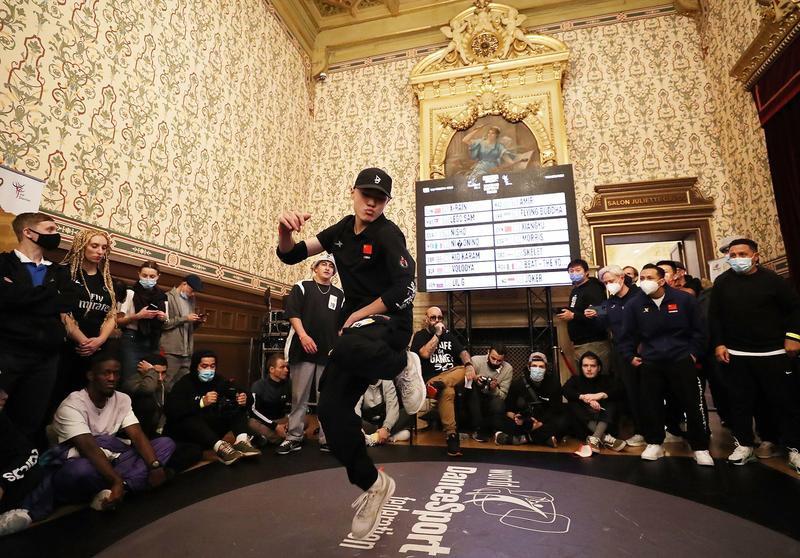 B-boy Qi Xiangyu, 17, competes at the World DanceSport Federation World Breaking Championship held in Paris in December. (PHOTO PROVIDED TO CHINA DAILY)
B-boy Qi Xiangyu, 17, competes at the World DanceSport Federation World Breaking Championship held in Paris in December. (PHOTO PROVIDED TO CHINA DAILY)
Young Chinese break dancers are actively preparing for the 19th Asian Games Hangzhou 2022, which are set to take place in September. The modern dance style will feature in the event program of the Asian Games for the first time.
Break dance is a genre of street dance that originated in the United States and was popularized in the latter half of the 20th century. The International Olympic Committee added the dance to the medal program of the 2024 Paris Olympics in 2020.
Three selection trials, involving break dance battling and a physical strength test, were originally scheduled once every month from March to May and were designed to pick out four competitors and four substitutes to compete on behalf of China at the Hangzhou Games.
However, due to the ongoing, fluctuating pandemic situation, the timetable has been affected.
Break dance, also called breaking, is more difficult and personalized in terms of moves when compared to other modern dance genres like hiphop or popping and locking. The dancers are called B-boys, B-girls, or breakers in general. It's competitive in nature, especially when it comes to 1 vs 1 battles, in which the conflicting dance moves have an undeniable aesthetic appeal, says Pei Dongguang, or B-boy Kim, 37, who has been a frequent judge of domestic and international breaking competitions.
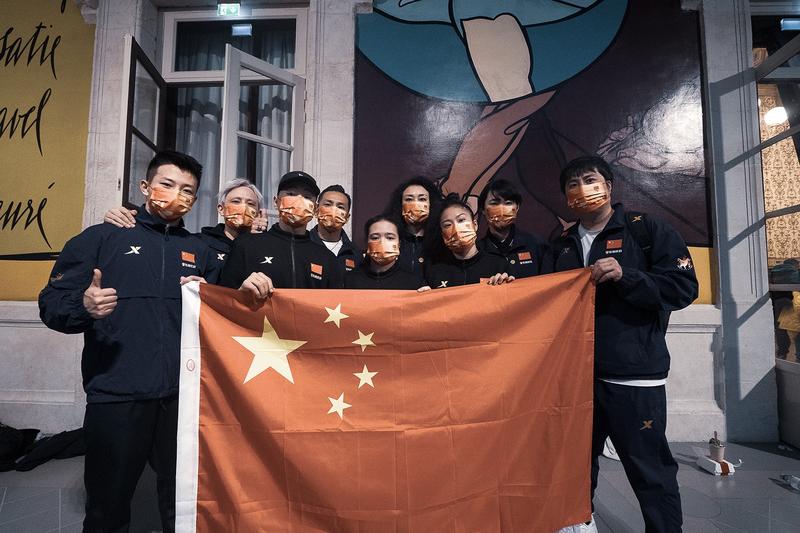 Chinese competitors and their coaches taking a group photo during the championship. (PHOTO PROVIDED TO CHINA DAILY)
Chinese competitors and their coaches taking a group photo during the championship. (PHOTO PROVIDED TO CHINA DAILY)
In December, China's national breaking team made its international competitive debut at the World DanceSport Federation World Breaking Championship held in Paris.
The championship saw B-girl Ayumi from Japan and B-boy Victor of the United States claiming world titles. The four Chinese breakers didn't make it to the top 8 in either gender category.
There was still a disparity between Chinese breakers and the world's top competitors, but it was not fundamental, according to Team China and their coaches, who all expressed a shared opinion during a post-championship livestream session.
Many of them say that the young generation of break dancers lack overseas competition experience, but they have great expectations going forward.
B-girl Liu Qingyi and B-boy Qi Xiangyu were both only 16 years old when they attended the championship. Liu won the gold medal at the 14th National Games in Nanjing, Jiangsu province, in September.
Pei, one of the judges, noticed in the qualification round of the championship that many breakers were wowed by the difficult power moves and body strength Liu demonstrated at such a young age.
Qi learned kung fu for several years and is very energetic. When the music starts, he is prompted by a desire to express himself, Pei says. He tutored Qi during the 20-day intensive training camp right before the championship.
However, in Pei's perspective, both of the teenage breakers need time to perfect their techniques and cultivate their personal styles, because age matters in breaking. Years of practice forges the breakers' musicality and the ways they battle.
They also need to learn more about the breaking culture-like how a certain move emerges and what signal it carries-to gain a deeper understanding of the dance and the battling form itself, he says.
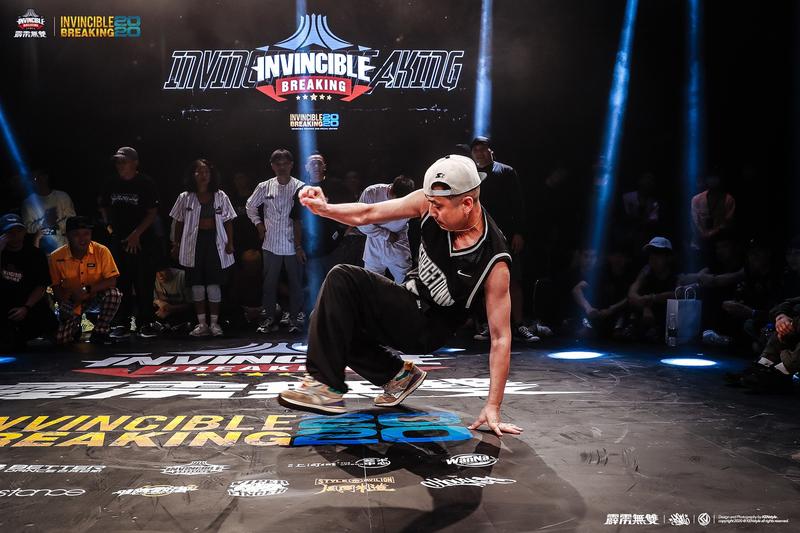 Pei Dongguang, aka B-boy Kim, shows up as a judge for Invincible Breaking Summer Jam 2020 in Nanning, Guangxi Zhuang autonomous region. (PHOTO PROVIDED TO CHINA DAILY)
Pei Dongguang, aka B-boy Kim, shows up as a judge for Invincible Breaking Summer Jam 2020 in Nanning, Guangxi Zhuang autonomous region. (PHOTO PROVIDED TO CHINA DAILY)
B-girl Rui Fenqi mentioned that the top dancers are especially good at finding the right moves to score competition points. It is like answering a test correctly. For the winners, it was as if every word was accurate and won points, and there was no redundancy. For her and her teammates, however, it was as if they had used too many adjectives in transition, which blurred their focus.
B-boy Shang Xiaoyu, born in 2000, attended the Buenos Aires 2018 Youth Olympic Games and the first WDSF championship in 2019 in Nanjing.
Competing in Paris, he could clearly see his own progress, which, as he puts it, proves that Chinese competitors are learning in the proper way and constantly improving.
The scoring method, the Trivium Value System that the championship applied, rates the breakers' physical, artistic and interpretive qualities, usually referred to as body, mind and soul by insiders. The score for each of these three values are split into two subcomponents, known as cross-faders. All of these criteria interlink and influence one another, and the judging system is based upon each judge balancing each of the cross-faders into positions that represent the different weight of quality in each category between the competitors. The scores are submitted after each round.
The system that will also be used for the Olympic Games requires comprehensive abilities, which can be very demanding for breakers, Pei says, adding that he used to be concerned that breakers would have to sacrifice part of their respective personalities to compete at the Olympics, or be too overwhelmed to fully enjoy the competition.
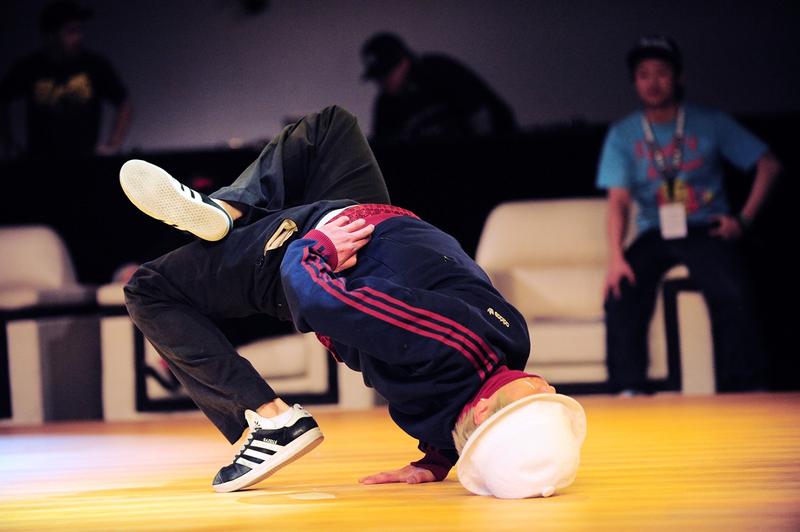 Pei competes at Keep On Dancing Volume 6 in 2010. (PHOTO PROVIDED TO CHINA DAILY)
Pei competes at Keep On Dancing Volume 6 in 2010. (PHOTO PROVIDED TO CHINA DAILY)
He was largely relieved, though, seeing many breakers he appreciated, not just competitors but also coaches, are proud to battle or teach on behalf of their country. He realized the Olympics are providing the breaking community with a larger platform to show the attraction of the genre, promote exchanges, gain attention and support, and eventually develop the culture.
"The premise is to respect and maintain the cultural root, and then we can seek a balance upon it," he says.
It was not until around the beginning of the century that breaking emerged in China, about a decade later than Japan and South Korea. Pei himself was initially fascinated by performances of Michael Jackson and K-pop group H.O.T.
So far, some Chinese breakers have achieved good rankings in international competitions, including R16 Korea, Red Bull BC One and SCAPE Radikal Forze Jam in Singapore, but very rarely have Chinese breakers won top honors, according to Pei, who's also team leader of Dragonstyle Crew, one of China's most renowned and successful breaking crews.
Nevertheless, recent years have seen breaking develop rapidly as an industry in China, notably after variety shows like Street Dance of China hit the screen.
There have been increasing commercial, professional breaking events, and online resources, through which the breaking community can interact with, and learn from, each other-all while attracting a growing audience.
The Chinese breaking circle was maintaining close offline connections with the international community before the outbreak of COVID-19 pandemic. Particularly, since breaking has made its way to the Olympics, parents are more willing to let their kids participate, which is very different from Pei's teenage years, when learning street dance was often viewed as a distraction from seemingly more important pursuits.
An industrial research report, released in December by China Hip-Hop Union Committee and the school of cultural industries management of the Communication University of China in Beijing, revealed that the country currently has 32 provincial street dance unions in contact with around 3 million practitioners and nearly 10,000 training studios.
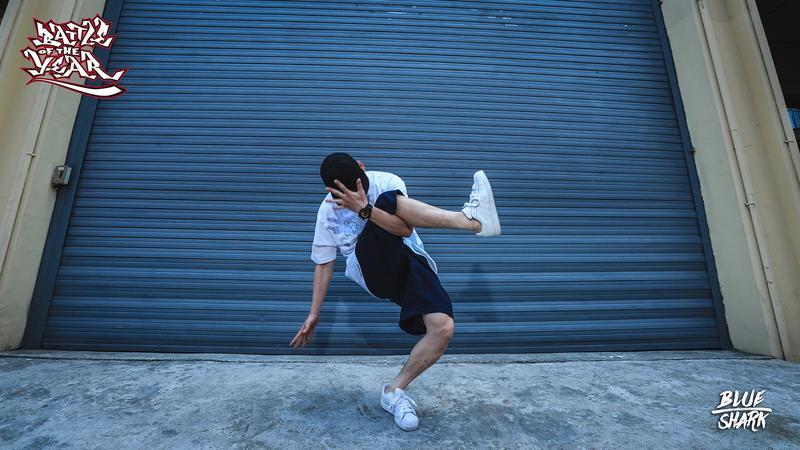 Pei poses during Battle of the Year 2017 China qualifier in Chengdu, Sichuan province, where he was a competition judge. (PHOTO PROVIDED TO CHINA DAILY)
Pei poses during Battle of the Year 2017 China qualifier in Chengdu, Sichuan province, where he was a competition judge. (PHOTO PROVIDED TO CHINA DAILY)
For Pei, over the years, breaking has turned from a passion into a part of life, something he's been doing every day. He thinks his 3-year-old daughter, who constantly sees him practice, has been exhibiting extraordinary rhythmic body movements, although he hasn't taught her any moves yet.
And, as time goes by, he cherishes the 26 members of the crew, who went through troubled times and rose from obscurity, even more. They keep close ties, even though many of them no longer live or work together.
Pei and his fellow breakers had to forge a new path and explore the genre mainly by themselves, inevitably facing challenges and detours along the way. However, he expects the next generation to have a much easier journey. He hopes they will find creative ways of integrating Chinese culture into freestyle dance in the future.
Around 15 years ago, Dragonstyle pioneered the integration of kung fu and Peking Opera into its choreography, but today Pei would not be satisfied with that, as he describes the combination to still be superficial.
Creativity has always been priority for him as a coach and a judge. He sees it as especially fresh and compelling if a breaker comes up with an unexpected freestyle move to make up for a mistake, but he is starting to notice a trend of homogenization in competitions, both at home and abroad.
"I do hope breaking teachers pay more attention to developing young people's imagination and teaching them not to be afraid of making mistakes and, most importantly, to be happy with breaking," Pei says.
Contact the writer at fangaiqing@chinadaily.com.cn


